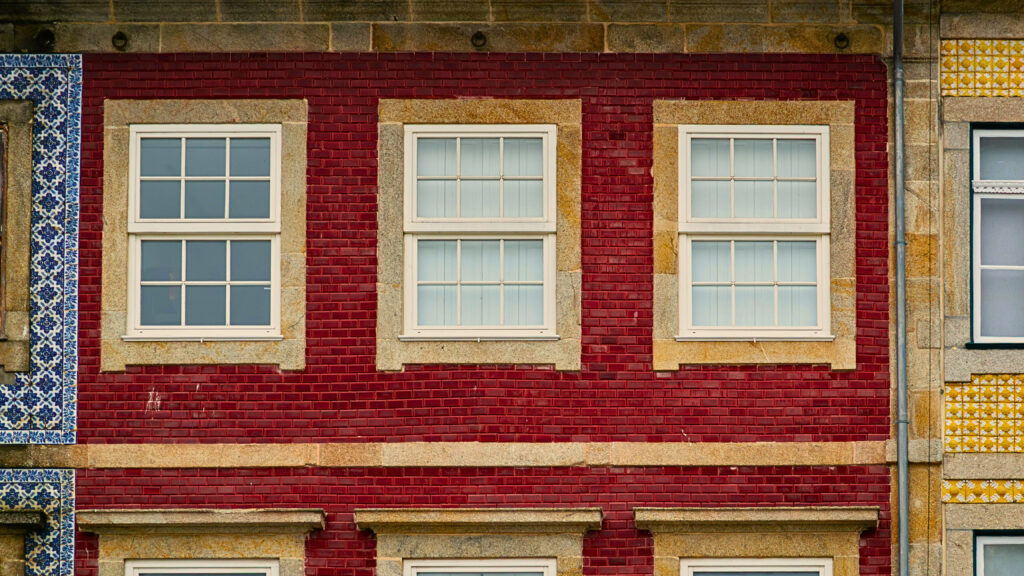Discover brick retaining wall options in Charlotte, NC. Learn about materials, structure, and design to build a wall that’s durable and attractive.
A brick wall can make or break a backyard, just ask anyone who’s watched their neighbor’s wall collapse after a heavy Charlotte rain. These aren’t just pretty garden features, they’re workhorses that keep soil where it belongs and turn useless slopes into valuable space.
While it might be tempting to stack some bricks and call it a day, that’s asking for trouble, especially with our stubborn red clay soil. Whether you’re fixing a crumbling slope or trying to carve out a flat spot for that garden you’ve been dreaming about, here’s the real deal on building a retaining wall that won’t let you down.
Key Takeaway
- Choose between gravity, reinforced, or segmental walls, each one’s got its sweet spot depending on your yard’s situation.
- Skimp on materials now, and you’ll pay double later when that wall starts leaning.
- Water’s your wall’s worst enemy – get the drainage right or nothing else matters.
Types of Brick Retaining Walls
Gravity Walls
Let’s start with the basics – gravity walls. Nothing fancy here, just solid mass doing what it does best: holding back dirt. They work great for shorter walls, maybe up to 4 feet high. You can use regular clay bricks or concrete blocks, and they’re pretty straightforward to build. Just don’t get cocky about the design – even simple walls can fail if they’re not thought through. (1)
Reinforced Retaining Walls
Think of these as gravity walls with a backbone. Steel rebar runs through them, and they’ve got concrete footings that dig deep into the ground. These are what you want when you’re dealing with serious height – they can handle the pressure from all that dirt pushing against them. Not cheap, but they’ll sleep better at night.
Segmental Retaining Walls
These newer-style walls use interlocking blocks, but you can dress them up with brick on the front if that’s your thing. Kind of like putting a nice suit on a weightlifter – looks good, works better.
Materials

Credits : Pexels.com (Photo by Samnosconi)
Here’s what you’re working with:
- Regular Clay Bricks: Fine for small stuff, but don’t push your luck. They’ll handle a 3-foot wall okay, anything more and you’re asking for trouble.
- Engineering Bricks: The real workhorses. They cost more, but there’s a reason pros reach for these first. They’re built to take a beating.
- Hollow Blocks with Rebar: These are your heavy lifters. Fill ’em with concrete and rebar, and they’ll hold back a mountain. Well, almost.
- Mortar vs. Dry Stack: You can go either way, but around here with all our rain, mortar’s probably smarter. Just don’t forget drainage holes – water trapped behind a wall is like a time bomb.
Look, picking materials isn’t rocket science, but it’s not something to take lightly either. That fancy clay brick might look great in your Pinterest board, but it won’t mean much when your wall’s doing the lean. Match your materials to your job – bigger walls need stronger stuff. And whatever you pick, remember water’s always trying to knock your wall down. Good drainage isn’t just nice to have, it’s what keeps these walls standing year after year.
Structural Considerations
- Foundation or Footing: A strong foundation is a must. It keeps your wall from shifting and makes sure it stays stable. Think of it as the wall’s solid base. Without it, your wall might wobble or even fall over.
- Drainage: Adding drainage behind the wall is really important. It helps reduce hydrostatic pressure, which is just a fancy way of saying it keeps water from building up. Too much water can weaken the wall and cause damage. Proper drainage keeps everything dry and safe. (2)
- Reinforcement: Depending on how tall your wall is and how much pressure the soil puts on it, you might need some extra support. Using rebar or geogrids can make your wall much stronger. If your wall is over three feet tall, it usually needs an engineer to help design it.
These structural elements are key to a successful brick retaining wall. By focusing on the foundation, drainage, and reinforcement, you set your wall up for success. A solid foundation means stability. Good drainage keeps water issues at bay. And reinforcement adds strength where it counts.
When planning your wall, think about how high it will be and the kind of soil behind it. This way, you can make smart choices that ensure your wall lasts a long time and looks great. Building a strong, sturdy wall is all about these basic but essential steps. Keep it simple, and you’ll build something that stands strong against the elements.
Design Elements
Credits : Marshalls Gardens and Driveways
- Backward Tilt (Batter): A slight backward tilt makes your wall more stable. This angle helps it resist the pressure from the soil behind it. It’s like leaning a little to keep your balance. This simple design feature can make a big difference.
- Drainage Outlets: Adding drainage outlets, like French drains, is smart. These help manage water buildup behind the wall. When water collects, it can weaken the wall. Drainage outlets keep everything flowing smoothly and prevent damage.
- Caps or Coping Bricks: Caps or coping bricks serve two purposes. First, they make your wall look nicer. Second, they protect the top from weather damage. This helps keep your wall looking good for years. You can use mortar or adhesive at the back for extra strength, making sure everything stays in place.
These design elements are essential for creating a strong and attractive brick patio retaining wall. The backward tilt improves stability, while drainage outlets handle water issues. Caps or coping bricks add style and protection.
When planning your wall, don’t overlook these details. Each element plays a role in how well your wall performs. A little extra thought can lead to a more durable and beautiful result. Keeping things straightforward and practical will help you build a wall that not only looks great but also stands strong against the elements.
Practical Notes
- Wall Stability: For your brick walls to stay strong, they need grooves or bonding features. These help prevent collapse. Traditional pavers aren’t a good choice for structural walls. They just can’t handle the pressure.
- Low Garden Borders: If you’re using bricks for small garden borders, you can stack them without heavy reinforcement. This makes it easy to create a neat, attractive border without a lot of fuss. Just make sure they are stable enough to hold soil.
- Local Codes: Always check local building codes and engineering requirements. These rules are important for safety and compliance. Following them protects you and ensures your wall will last.
These practical notes are key to building a successful brick retaining wall. Stability matters, so don’t skip the grooves or bonding features. For low garden borders, stacking bricks works well and looks nice. Just keep in mind that local codes are there for a reason. They help ensure your project is safe and up to standard.
By keeping these points in mind, you’ll set yourself up for a successful build. It’s all about attention to detail and making smart choices. Building a solid wall isn’t just about looks; it’s about durability and safety too. Stay informed, and you’ll create something lasting and beautiful.
Conclusion
Building a brick retaining wall in Charlotte involves careful consideration of types, materials, and structural needs. By understanding your options and following best practices, you can create a durable and attractive wall that enhances your landscape. If you have specific questions about construction techniques or materials, feel free to ask for more guidance! For expert help with your next brick retaining wall, connect with Lapis Patios and start planning your project today.
FAQ
How do different brick types affect the durability and appearance of retaining walls?
When choosing brick retaining wall options, the type of brick you pick matters a lot. Some bricks, like clay bricks, offer strong durability and classic looks but might be pricier. Concrete bricks tend to be more affordable and come in various colors and textures. The choice affects not just how long your wall lasts but also how it blends with your landscape and home style.
What are the pros and cons of mortar versus dry-stacked brick retaining walls?
Brick retaining walls can be built with mortar or dry-stacked methods. Mortar creates a strong bond between bricks, making the wall sturdier and better for holding back soil. Dry-stacked walls, on the other hand, use no mortar and rely on gravity and brick weight for stability, which can allow for easier repairs but might not hold soil as well. Your choice depends on the wall’s height and soil pressure.
How does drainage influence the design choices for brick retaining walls?
Proper drainage is key when building brick retaining walls. Without it, water pressure can build behind the wall and cause damage. Different brick retaining wall options incorporate drainage solutions like gravel backfill or weep holes. Understanding how water flows in your yard helps decide what drainage method and brick style will keep the wall safe and lasting longer.
Can brick retaining walls be combined with other materials, and what benefits does this bring?
Sometimes, mixing brick with other materials like stone or wood can improve both function and look of a retaining wall. Such combinations offer flexibility in design and can address specific terrain challenges. For example, stone caps on a brick wall can protect the bricks from weathering. This approach broadens your brick retaining wall options while adding character to your outdoor space.
What maintenance differences exist between various brick retaining wall options?
Not all brick retaining walls require the same upkeep. Mortared brick walls might need occasional repointing, where the mortar joints are repaired, while dry-stacked walls usually just need bricks repositioned if they shift. The type of brick also impacts moss resistance and staining. Knowing these differences, along with patio installation tips, helps you choose a wall option that fits your lifestyle.
References
- https://en.m.wikipedia.org/wiki/Retaining_wall
- https://www.thespruce.com/retaining-wall-drainage-11734444?

